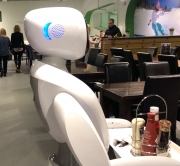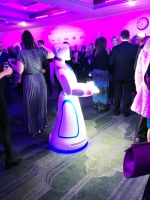Can Robots Learn To Get Along As They Continue To Fill The WorkPlace
The popularity of Service Robots has risen considerably over the last couple of years. Although the UK is starting to realise their potential, other countries such as Japan and Singapore have been embracing Robots for some time and they continue to increase in popularity in settings such as hospitals and restaurants.
Changi general hospital in Singapore has around 50 Robots, some assisting professionals with delicate surgical procedures and others guiding patients through surgery and rehabilitation exercises. Other Robots also carry out tasks such as cleaning and delivering medication and supplies, these Robots are often described as delivery Robots.
A future problem for many businesses that have multiple Robots from different manufacturers is finding a way for them to communicate with each other. Robots that have different manufacturers struggle to navigate within the same areas and this problem will have to be overcome if more Robots are employed in manufacturing, logistics, Restaurants, supermarkets and work places.
Changi is using software developed by open Robotics, open Robotics is nonprofit and allows Robots that are made by different manufacturers to talk and communicate with each other. The software Changi is using allows the robots not based on ROS to communicate as well. Open Robotics maintains the Robots operating system (ROS) open source software which is widely used to develop research and commercial robots. Open source has real potential which means lots of organizations can work together
The numbers of Industrial Robots such as Robotic arms have risen 85% to 2.7 million in 2019, sales of service Robots including delivery Robots has risen 32%.
The rise of Robots within different industries and sectors is clearly evident and this is largely due to advancements in technology but also due to advancements in sensing and navigation including the falling cost of components and related software.



